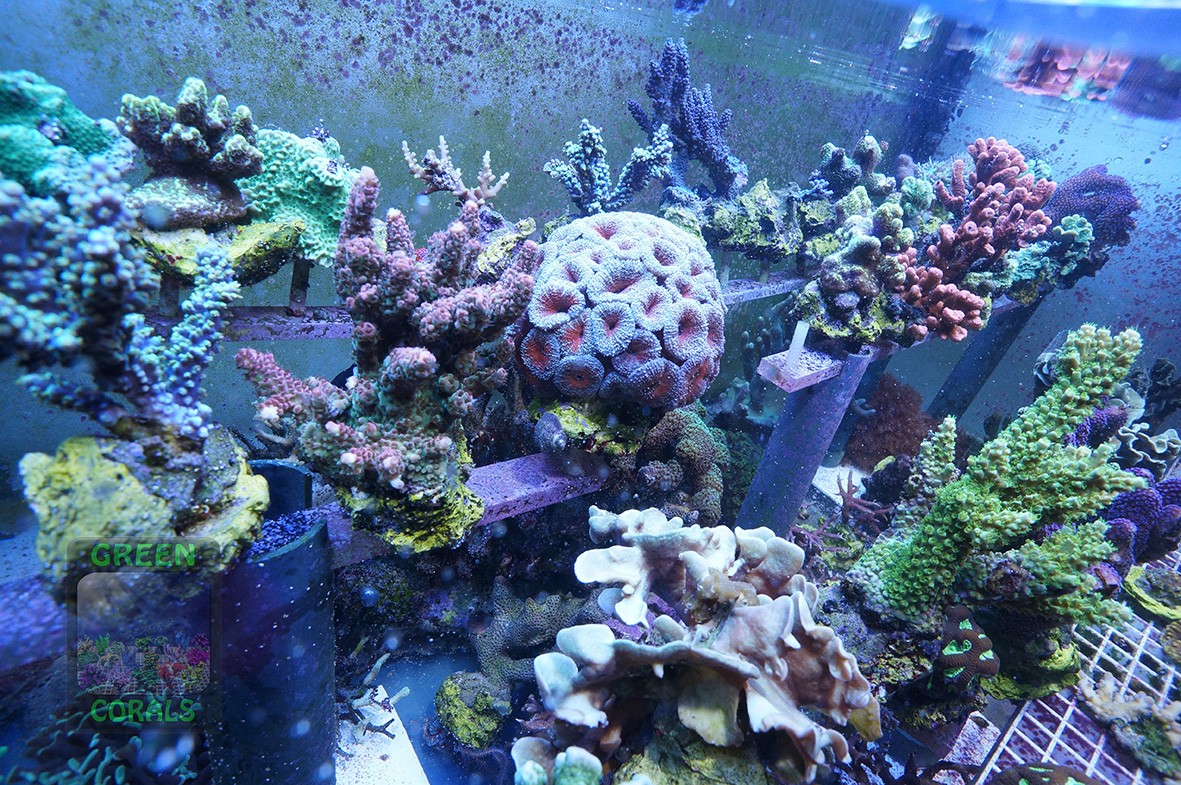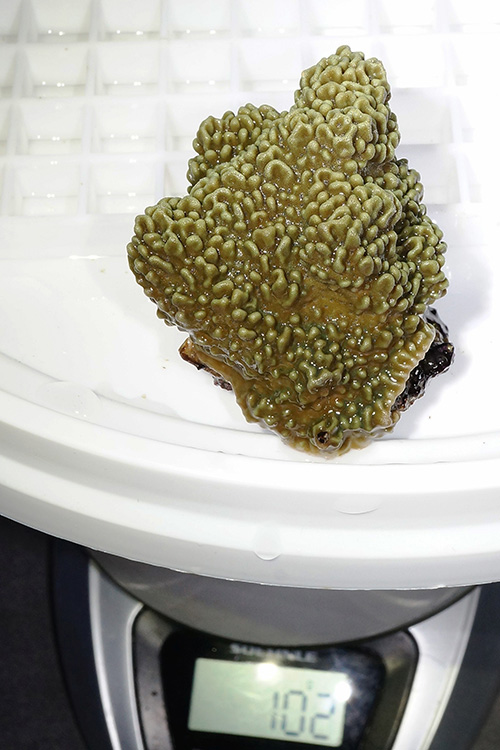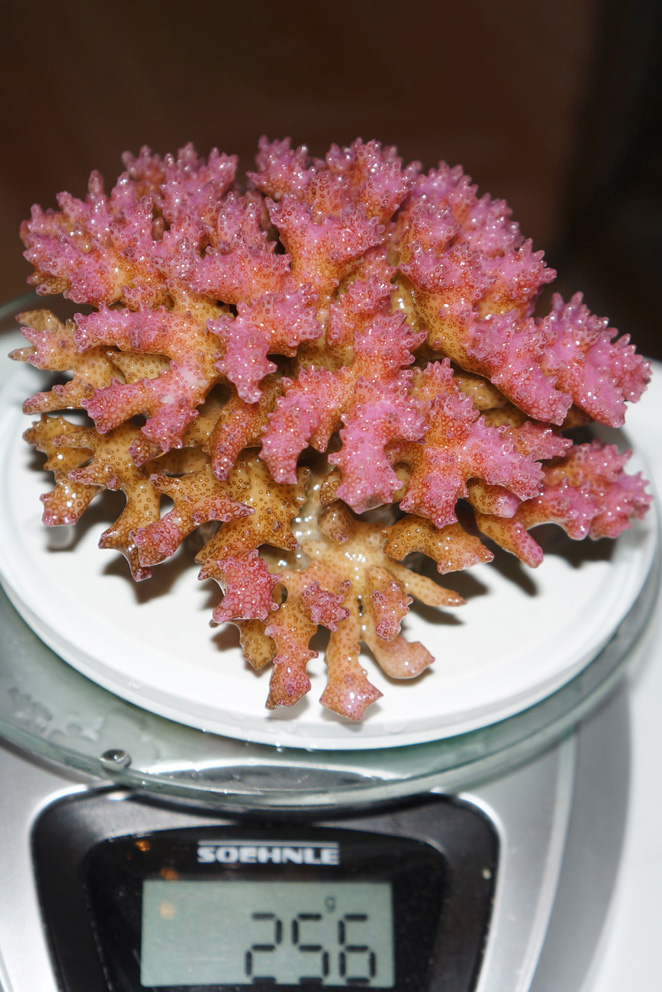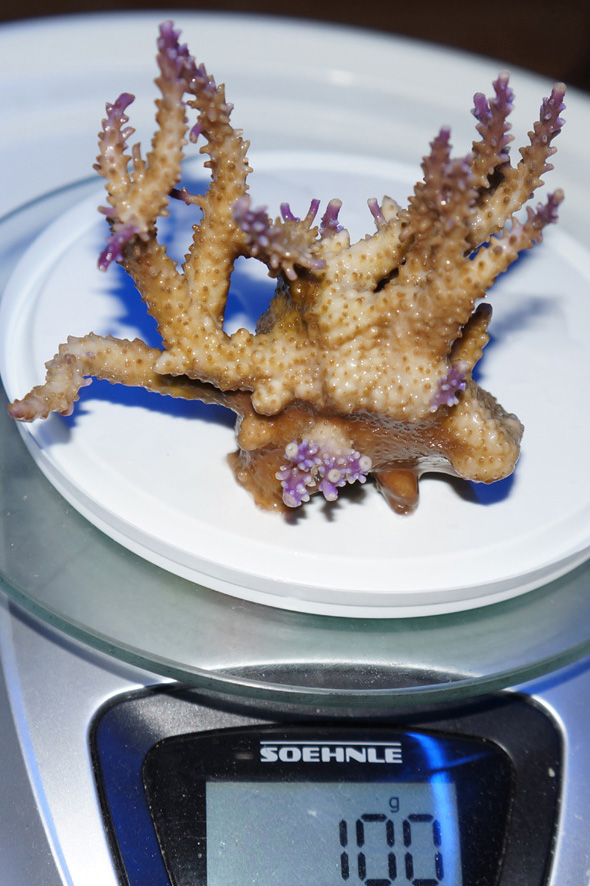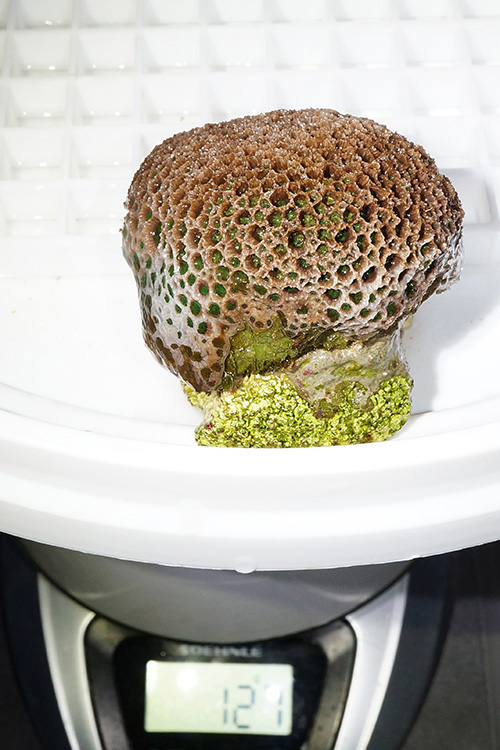Here are some advantages of aquarium grown corals:
We also fragment the block corals and LPS!
- Many LPS species, especially the massively growing corals (Favites, Micromussa, Acanthastrea, Goniopora, Alveopora, Platygyra, Pachyseris, etc.) or submassively growing corals (e.g. Fimbriaphyllia ancora) are hardly fragmented inland. In addition, these species grow much more slowly than Montipora, Acropora, Seriatopora and the like. As a result, these corals in the aquarium trade continue to come mostly from nature collections. Often you can guess how they were cut out of a large mother coral with a chisel.
- As this takes more time and the fragments grow more slowly, we have to charge a slightly higher price than for other species. On the other hand, these are real ‘offspring’ corals, grown using 100% renewable energy.
- Of course, all mother colonies also originate from nature abstractions. Our premise in fragmentation is that the mass of the mother coral after fragmentation must never fall below the initial weight at which we obtained the species. The mass of the mother colony and the frags descending from it will therefore increase to a certain point (space availability). This is also documented. Only the “excess” that has grown in the aquarium is sold. This ensures that they are genuine aquacultured corals. From all our mother colonies we have been able to sell coral frags many times the initial coral mass. We also try to maintain at least two colonies of each species – to preserve the species in case one coral dies.







